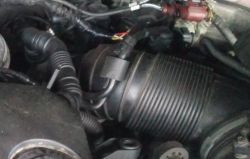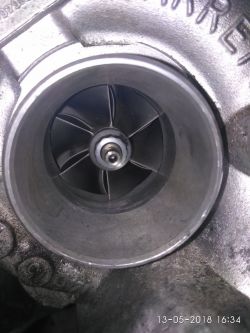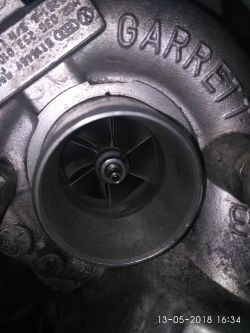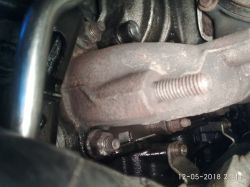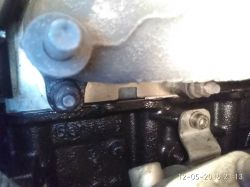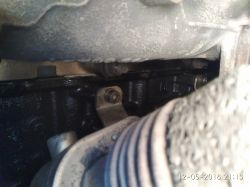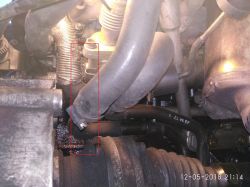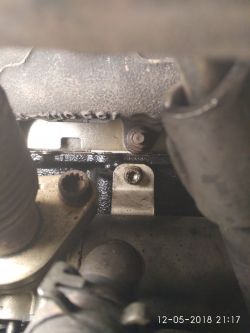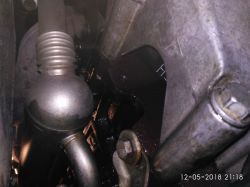Hi everyone.
I have a VW Caddy Skap 2008; 2.0Tdi; 140HP; Engine Code BMM. Mileage - 450,000 km.
Oil, filters - changed regularly every 10,000 km. Timing, water pump, etc. every 80-90 thousand.
Let me start at the beginning, it is possible that some information may be useful.
At the mileage of 380,000 there was a whistle / whistle from under the hood and the smell of exhaust gases in the cabin. Quiet at first, gradually louder. Always when accelerating at around 1800 revolutions. After taking your foot off the gas or exceeding 2500 revolutions, calm down - no strange sounds. At 400,000, I gave the car to the service for sure. They changed the guts in the turbine, checked the injectors, tightness of the system, etc. After driving 1500 km, the entertainment was repeated - the faults resurrected.
Unfortunately, I couldn't find the cause.
With 449,000 mileage, I was forced to remove the head and send it to a service station in Poland. Too many divergent theories about the fault. The head has undergone full service. Camshaft, bearings, glasses, etc. After folding, I drove 300 km and a miracle happened - the whistles / whistles resurrected again but without the smell of exhaust fumes in the cabin. After 600km there was an oil leak on the back of the engine. I washed the engine, took off and put the valve cover back on - I used to do this. I drove 8 km and I don't believe - silence in the car, no whistle / whistle. I don't think it is possible. In the morning on the way to work, all the whistles / whistles returned. The engine shows that the head and collectors are dry and clean. The engine block and everything around it is covered with oil. Could it be a badly installed head gasket?
Some useful information:
- During the assembly of the head, the gasket was not damaged or broken. The head is tightened with a torque wrench according to the scheme with the intervals between the stages of tightening with new bolts.
- After assembling and starting, the engine worked and continues to run without any problems. 0 errors.
- A set of gaskets ordered from the service where the heads were repaired (from the top shelf)
- All accessories carefully washed and free of carbon deposits.
- Replaced EGR exhaust gas cooler after regeneration. EGR valve cleaned (it's already the 3rd time)
- Camshaft position, exhaust pressure and oil pressure sensor replaced with new ones.
- The coolant does not mix with the oil. Oil with liquid as well.
- We did not part with Autocom during the repair and commissioning.
It seems to me that I have presented everything that is essential. I will just add that I live abroad, I do most of the repairs myself or with a proven Swedish mechanic where, unfortunately, the costs are high, even very high. Diagnostics anywhere on the site also costs a fortune. I also have a fondness for this car - hence the decision to repair a 10-year-old VW with a mileage of 450,000 and one of the most defective engines.
Whistles / whistles - Friends are betting that it is a leak at the inlet, I checked everything and it looks ok. The only thing left is the EGR valve damaged. Is it possible ? Perhaps someone has had such a problem and knows the solution, or will give you a hint before incurring unnecessary costs.
Oil leak - I do not understand where the oil comes from ... "Lubrication" of the turbine - clean and dry everywhere. Turbine oil return - dry. Valve cover - rather falls off. Front of the engine - dry and clean. Everything points to the head gasket ... but the engine is ticking much better than before the repair. Tomorrow and in fact, today I will come to check the compression. And here my ideas end. In order to locate the leak, I would have to disassemble everything again and be without a car, which I cannot afford at the moment.
I hope that there will be someone who has a similar problem and I will be able to reward him for help with a solid brewery.
Best Redgards. Patrick
I have a VW Caddy Skap 2008; 2.0Tdi; 140HP; Engine Code BMM. Mileage - 450,000 km.
Oil, filters - changed regularly every 10,000 km. Timing, water pump, etc. every 80-90 thousand.
Let me start at the beginning, it is possible that some information may be useful.
At the mileage of 380,000 there was a whistle / whistle from under the hood and the smell of exhaust gases in the cabin. Quiet at first, gradually louder. Always when accelerating at around 1800 revolutions. After taking your foot off the gas or exceeding 2500 revolutions, calm down - no strange sounds. At 400,000, I gave the car to the service for sure. They changed the guts in the turbine, checked the injectors, tightness of the system, etc. After driving 1500 km, the entertainment was repeated - the faults resurrected.
Unfortunately, I couldn't find the cause.
With 449,000 mileage, I was forced to remove the head and send it to a service station in Poland. Too many divergent theories about the fault. The head has undergone full service. Camshaft, bearings, glasses, etc. After folding, I drove 300 km and a miracle happened - the whistles / whistles resurrected again but without the smell of exhaust fumes in the cabin. After 600km there was an oil leak on the back of the engine. I washed the engine, took off and put the valve cover back on - I used to do this. I drove 8 km and I don't believe - silence in the car, no whistle / whistle. I don't think it is possible. In the morning on the way to work, all the whistles / whistles returned. The engine shows that the head and collectors are dry and clean. The engine block and everything around it is covered with oil. Could it be a badly installed head gasket?
Some useful information:
- During the assembly of the head, the gasket was not damaged or broken. The head is tightened with a torque wrench according to the scheme with the intervals between the stages of tightening with new bolts.
- After assembling and starting, the engine worked and continues to run without any problems. 0 errors.
- A set of gaskets ordered from the service where the heads were repaired (from the top shelf)
- All accessories carefully washed and free of carbon deposits.
- Replaced EGR exhaust gas cooler after regeneration. EGR valve cleaned (it's already the 3rd time)
- Camshaft position, exhaust pressure and oil pressure sensor replaced with new ones.
- The coolant does not mix with the oil. Oil with liquid as well.
- We did not part with Autocom during the repair and commissioning.
It seems to me that I have presented everything that is essential. I will just add that I live abroad, I do most of the repairs myself or with a proven Swedish mechanic where, unfortunately, the costs are high, even very high. Diagnostics anywhere on the site also costs a fortune. I also have a fondness for this car - hence the decision to repair a 10-year-old VW with a mileage of 450,000 and one of the most defective engines.
Whistles / whistles - Friends are betting that it is a leak at the inlet, I checked everything and it looks ok. The only thing left is the EGR valve damaged. Is it possible ? Perhaps someone has had such a problem and knows the solution, or will give you a hint before incurring unnecessary costs.
Oil leak - I do not understand where the oil comes from ... "Lubrication" of the turbine - clean and dry everywhere. Turbine oil return - dry. Valve cover - rather falls off. Front of the engine - dry and clean. Everything points to the head gasket ... but the engine is ticking much better than before the repair. Tomorrow and in fact, today I will come to check the compression. And here my ideas end. In order to locate the leak, I would have to disassemble everything again and be without a car, which I cannot afford at the moment.
I hope that there will be someone who has a similar problem and I will be able to reward him for help with a solid brewery.
Best Redgards. Patrick



